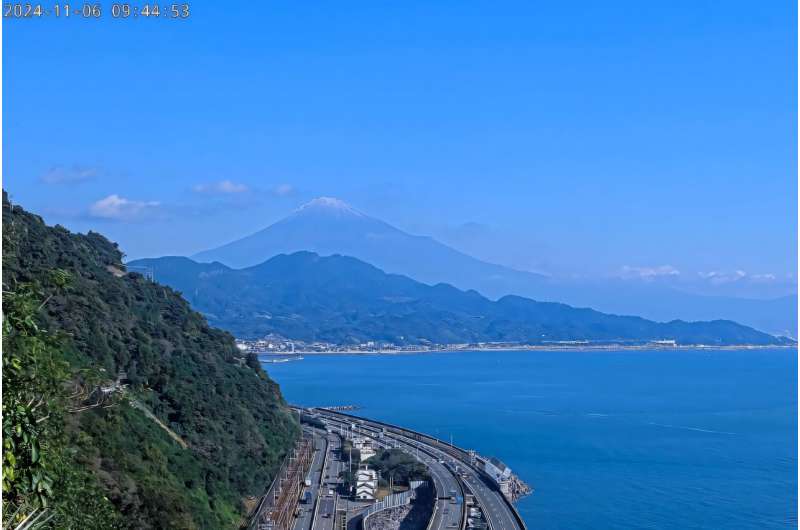Japan’s famous Mount Fuji has remained snow-free well into autumn this year, a phenomenon that hasn’t occurred since record-keeping began 130 years ago.
Normally, Japan’s tallest mountain is snow-covered by mid-October, marking the arrival of winter. However, this year, milder temperatures have kept Mount Fuji clear of snow, surpassing the previous record for the latest snowfall, which was set on 26 October 1955 and matched in 2016.

Meteorologists from the Kofu Local Meteorological Office, located approximately 40 km from Mount Fuji, have confirmed that unusually high temperatures have caused a delay in the first snowfall.
They announce the first snowcap of the season as soon as it becomes visible from their observation point, a tradition that has been followed for over a century.
While seasonal weather fluctuations occasionally cause delays, officials attribute this year’s particularly late snowfall to ongoing climate trends that have raised average autumn temperatures in recent decades.
The delayed snowfall on Mount Fuji reflects a global pattern of unpredictable seasonal shifts caused by the climate crisis. Longer summers are affecting both snow cover and precipitation. In fact, 2024 is expected to be the hottest year on record worldwide for the second consecutive year.

Japan’s coastal and mountain areas have experienced similar effects, with warmer autumns and milder winters becoming more frequent.
The country endured its hottest summer on record for the second consecutive year in 2024, with temperatures 1.76C higher than the average from 1991 to 2020. Now, unusually warm autumn temperatures are delaying the arrival of the first snowfall.
Dozens of cities in Japan reported high temperatures, near or exceeding 30C, during the early days of October, according to analysis by the nonprofit research group Climate Central.
The study found that the unusual heat Japan has been experiencing was made three times more likely due to the climate crisis.
In 2024, a record number of people died from heatstroke in Tokyo, with 252 deaths occurring between June and September. Most of the victims were elderly individuals who were found dead in their homes without air conditioning. Earlier this year, Japan’s early cherry blossom bloom had also raised concerns.
Aside from climate issues, Fuji has been facing other challenges, including overtourism. This year, local authorities introduced a tourist tax to help manage the growing number of visitors, aiming to reduce the environmental impact caused by millions of people who hike to the famous mountain every year.
Update, November 6th: The Cap Is Back

Mount Fuji, Japan’s famous mountain, has recently seen the return of its snow cap, a sight that had been missing in recent years. This change is attributed to the ongoing effects of climate change, which has led to warmer temperatures, particularly in the summer, causing the snow to melt earlier and not last as long. However, after a period with very little snow, cooler temperatures have allowed a fresh layer of snow to accumulate, bringing back the mountain’s iconic snow-capped look. Experts believe this change could signal a temporary return to cooler conditions or a disruption in long-term climate patterns. The snow on Mount Fuji is not just an important cultural symbol, but also a natural indicator of broader environmental shifts. For climatologists, observing the changes in snow coverage on the mountain is a key way to track the impact of global warming on local ecosystems.

